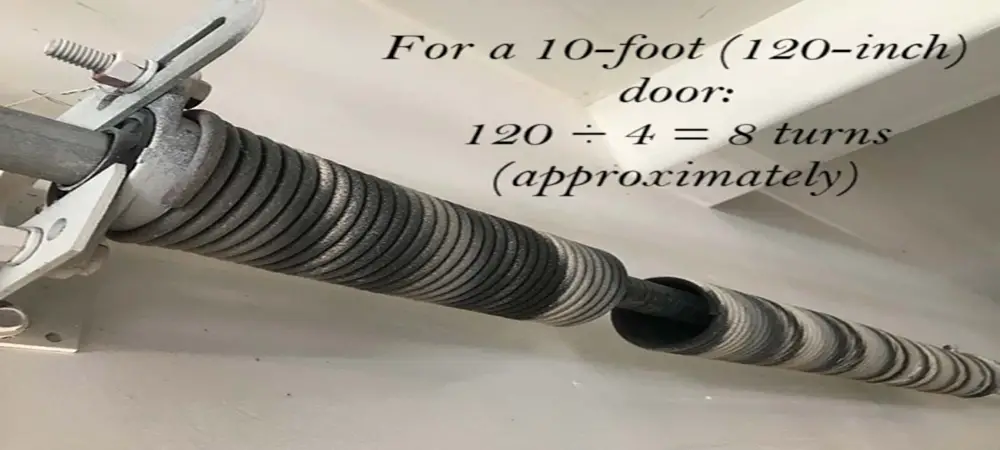Garage door springs play a crucial role in the functionality and safety of your garage door. They bear the weight of the door, making it easier to lift and lower. However, adjusting the number of turns on a garage door spring is critical for ensuring optimal performance. In this article, we will explore how many turns are needed for a 10-foot garage door and the best ways to calculate and adjust them.
Understanding Garage Door Springs

What Are Torsion Springs?
Torsion springs are tightly wound metal coils that store energy when twisted. They help counterbalance the weight of a garage door, ensuring smooth operation.
How Do They Function?
When the garage door is closed, the torsion spring is under tension. As the door opens, the spring unwinds, releasing stored energy to lift the door.
Why Accurate Turns Matter
Properly setting the number of turns ensures:
- The door operates smoothly and efficiently.
- Reduced strain on the motor and other components.
- A longer lifespan for the springs.
Determining the Number of Turns for a 10-Foot Garage Door
For a standard 10-foot garage door, the required number of turns typically falls between 7.5 to 8.5 turns. However, factors like spring size and door weight may affect this range.
Using a Garage Door Spring Calculator
What is a Garage Door Spring Calculator?
A spring calculator is a tool designed to help determine the correct number of turns for your garage door springs.
Steps to Use the Calculator:
- Measure the wire size, inside diameter, and length of your spring.
- Enter these values into an online garage door spring calculator.
- The calculator will provide an exact number of turns based on your inputs.
Measuring Your Garage Door Spring Correctly
To ensure accurate calculations, measure:
- Wire size (use calipers for precision)
- Inside diameter (usually printed on the spring)
- Spring length when fully relaxed
How to Calculate the Turns Manually
A general formula for estimating spring turns is:
(Door height in inches) ÷ (4 inches per turn) = Approximate turns needed
For a 10-foot (120-inch) door:
120 ÷ 4 = 8 turns (approximately)
Safety Precautions When Adjusting Garage Door Springs
Risks of Improper Adjustments
- Over-tightening may cause the spring to snap.
- Under-tightening results in improper door function.
Safety Tips:
- Wear protective gloves and safety glasses.
- Use a winding bar, NOT a screwdriver.
- Keep your face and body clear of the spring’s path.
DIY vs. Professional Spring Adjustment
DIY Pros and Cons:
✔️ Cost-effective
❌ High risk of injury
When to Call a Professional:
- If unsure about the correct number of turns.
- If your spring has visible damage.
- If the door is extremely heavy.
Common Problems When Adjusting Springs
- Over-tightened springs: The door opens too quickly or slams shut.
- Under-tightened springs: The door feels too heavy to lift.
- Spring breakage: Often due to rust or excessive wear.
Maintenance Tips for Garage Door Springs
- Lubricate springs every 3-6 months.
- Check for rust and replace springs if necessary.
- Inspect springs for signs of wear or uneven stretching.
Conclusion
Ensuring your garage door springs are properly adjusted is key to safe and smooth operation. Whether using a garage door spring calculator or manually adjusting the turns, always prioritize accuracy and safety. If in doubt, seek professional assistance to avoid costly damage or injuries.


